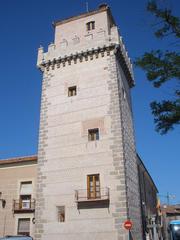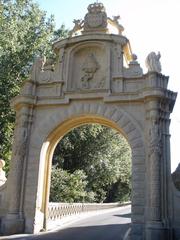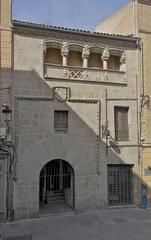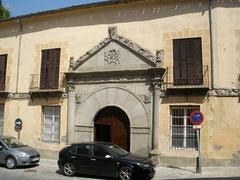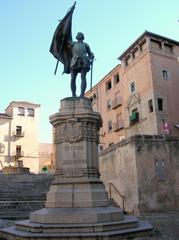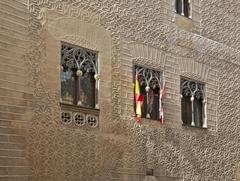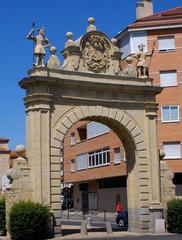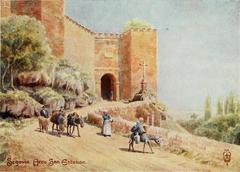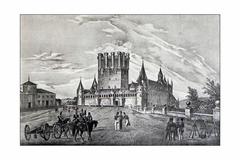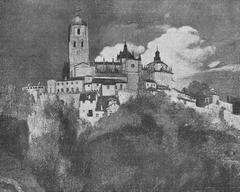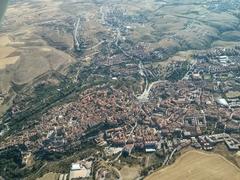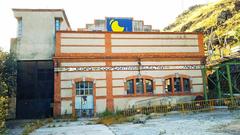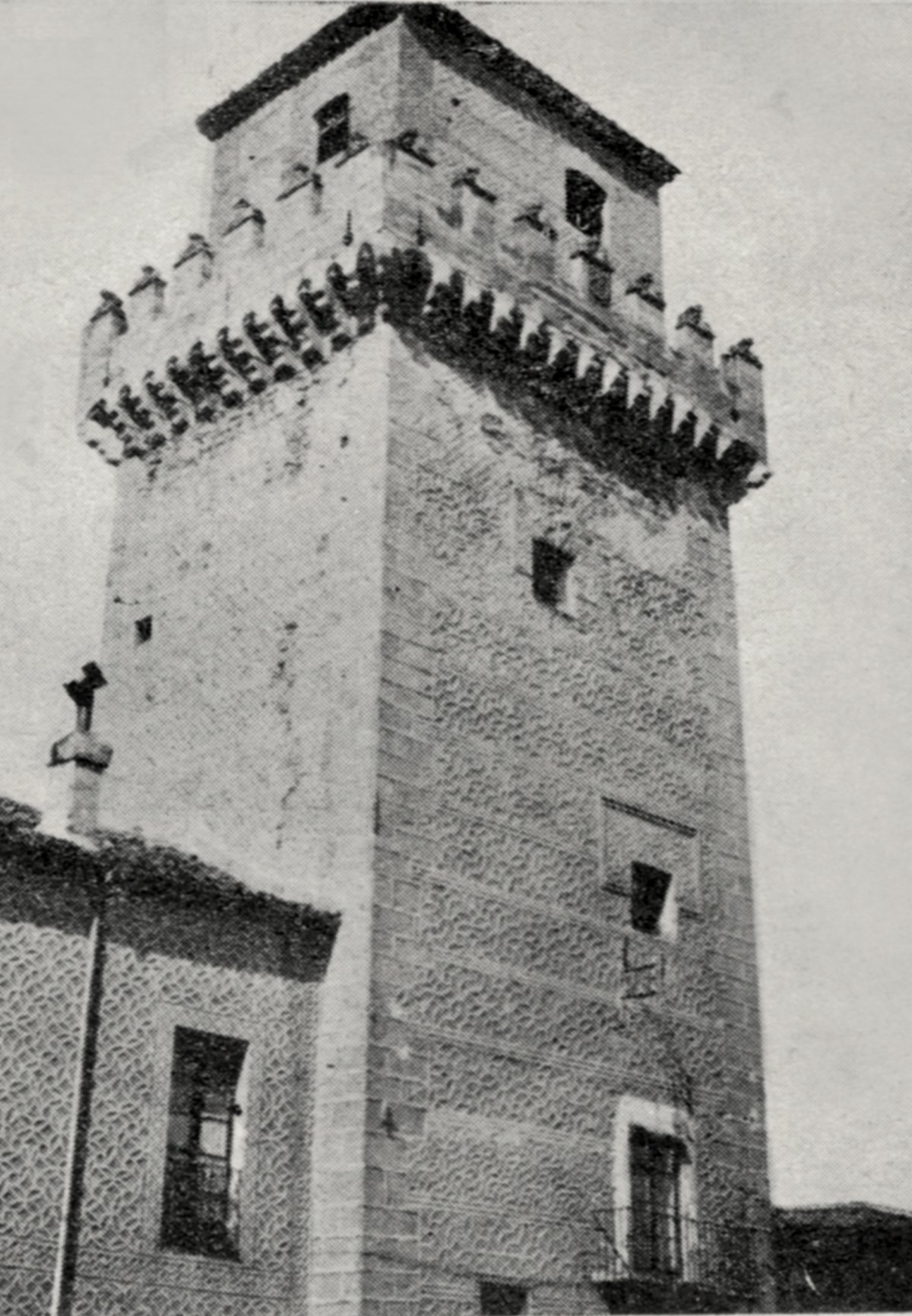
Tower of Arias Dávila: Visiting Hours, Tickets & Historical Significance in Segovia, Spain
Date: 14/06/2025
Introduction
Rising above the heart of Segovia’s medieval center, the Tower of Arias Dávila (Torre de Arias Dávila) stands as a powerful testament to the city’s noble heritage and complex historical tapestry. Built in the 15th century, this fortified tower—adorned with intricate sgraffito plasterwork—was once the residence of the influential Arias Dávila family, whose trajectory from converso origins to Castilian nobility mirrors broader shifts in Spain’s religious and social landscape. As both a defensive stronghold and a symbol of status, the tower today offers a unique lens through which visitors can explore Segovia’s architectural innovation, political intrigue, and multicultural identity (Turismo de Segovia; Rutas con Historia; CastillosRicsol).
This comprehensive guide details the tower’s history, architectural features, visitor access, ticketing information, and practical tips to help you make the most of your Segovia visit.
Historical Background
The Arias Dávila Family: Ascendancy and Influence
The Arias Dávila family’s rise in 15th-century Castile is emblematic of the era’s social dynamism. Originally of Jewish descent, the family converted to Christianity and quickly ascended the ranks of nobility by serving the crown, particularly during the turbulent reign of Enrique IV. Diego Arias Dávila, the tower’s patron, was a key royal advisor, while his son, Juan Arias Dávila, became Bishop of Segovia—a position that placed the family at the intersection of political, religious, and civic spheres (secobia.com; Taylor & Francis).
Amid the scrutiny of the Spanish Inquisition, the Arias Dávila navigated challenges common among conversos, maintaining their influence through royal favor, civic contributions, and strategic alliances. The tower itself became both a fortified refuge during political unrest and a visible marker of the family’s elevated status (Rutas con Historia).
Architectural Features
Exterior
- Masonry and Structure: The tower is constructed from a mix of rough stone and brick bands, exemplifying late medieval Castilian techniques (CastillosRicsol). Its square plan and imposing height reflect both defensive and residential functions.
- Sgraffito Decoration: The façade is richly adorned with geometric sgraffito—an incised plasterwork technique revealing contrasting colors—a hallmark of Segovia’s architectural identity (Turismo de Segovia).
- Defensive Elements: Arrow slits, crenellations, and thick masonry walls provided security during times of civil unrest.
- Heraldic Shields: Carved stone coats of arms affirm the Arias Dávila family’s noble status (CastillosRicsol).
Interior
- Coffered Ceilings (Artesonado): The interior preserves original painted and carved wooden ceilings, rare survivals of 15th-century craftsmanship (Turismo de Segovia).
- Restorations: Modern interventions, including a glass roof over the main courtyard, have ensured the building’s preservation while respecting its historical integrity (Euteca).
Cultural and Urban Significance
- Symbol of Multicultural Heritage: Architectural details such as sgraffito and Mudéjar elements reflect Segovia’s layered history of Christian, Jewish, and Muslim influences (Cyberspain).
- Political and Social Hub: The tower’s location in the Caballeros district placed it at the center of Segovia’s noble and administrative life (Nomads Travel Guide).
- UNESCO World Heritage Site: Contributing to Segovia’s designation, the tower is integral to the city’s historic and architectural identity (Spain.info).
Visitor Information
Visiting Hours and Access
As of June 2025, the Tower of Arias Dávila primarily houses government offices (Delegation of Economy and Finance) and is not open for daily public tours. However, access to the interior is sometimes possible during special heritage days or through guided tours arranged by the Segovia Tourism Office (Turismo de Segovia). The exterior of the tower is always visible and accessible for photographs and observation.
- Standard Viewing Hours (Exterior): Accessible at all times
- Interior Access: Available only during special events or pre-arranged group tours. For current opportunities, contact the Tourism Office at [email protected].
Ticket Information
- General Admission: No regular ticket sales due to administrative use.
- Special Events/Tours: May require advance booking and fees; check with the Tourism Office for details.
Accessibility
- The exterior and the plaza are accessible to all visitors.
- Interior access is limited due to historic stairs and narrow passageways; visitors with reduced mobility are advised to contact the Tourism Office for accommodation (Nomads Travel Guide).
Guided Tours & Special Events
- Guided tours are occasionally available as part of broader explorations of Segovia’s noble palaces.
- Special cultural events or temporary exhibitions may include interior access.
How to Get There
- Location: Intersection of Calle Colón and Plaza de los Huertos, Segovia, near Plaza Mayor (MonumentalNet).
- Getting Around: Segovia’s historic center is pedestrian-friendly. Arrive via public transport or park in designated lots outside the old quarter.
Recommendations & Nearby Attractions
- Combine with Other Sites: The Roman Aqueduct, Alcázar, and Segovia Cathedral are all within a short walk and are must-see landmarks (Spain Guides).
- Photographic Tips: Visit at golden hour for optimal light on the sgraffito façade and heraldic shields.
- Dining: Nearby cafes and restaurants offer Segovia’s renowned cuisine, including cochinillo asado.
Frequently Asked Questions (FAQ)
Q: Is the Tower of Arias Dávila open to the public?
A: The exterior is always accessible. Interior visits are available only during special tours or events. Contact the Segovia Tourism Office for current information.
Q: Are there entrance fees?
A: No regular admission fees; special events may charge a fee.
Q: Is the site wheelchair accessible?
A: The plaza is accessible, but the historic interior poses challenges. Contact the Tourism Office for assistance.
Q: Are guided tours offered in English?
A: Yes, subject to availability and advance booking.
Q: What else should I see nearby?
A: The Roman Aqueduct, Alcázar, Cathedral, and Jewish Quarter are all within walking distance.
Plan Your Visit
For the latest information on tours, special events, and accessibility, consult the official Segovia Tourism website or contact the Tourism Office directly.
Travel Tip: Download the Audiala app for guided audio tours, maps, and real-time updates on Segovia’s historical sites.
Summary
The Tower of Arias Dávila is a keystone of Segovia’s medieval heritage, encapsulating the city’s architectural ingenuity, social evolution, and multicultural legacy. Though interior access is limited, its striking exterior and location amidst Segovia’s most celebrated monuments make it an essential stop for those seeking to understand the city’s historical depth. Plan your visit to coincide with special cultural events or guided tours for a more immersive experience (Turismo de Segovia; Nomads Travel Guide).
Sources and Further Reading
- Juan Arias Dávila, el obispo humanista, 2024, Secobia
- Palacio Arias Dávila, Museo FLG
- MonumentalNet, Torre de Arias Dávila
- CastillosRicsol, Torre de Arias Dávila
- Turismo de Segovia, Arias Dávila Tower
- Rutas con Historia, Palacio de Arias Dávila
- Taylor & Francis, Bishop Juan Arias Dávila, 2023
- Spain.info, Segovia Destination
- Nomads Travel Guide, Segovia City Guide
- Turismo Castilla y León, Segovia Heritage
- Cyberspain, Segovia Cultural Guide
- Spain Guides, Segovia Travel Tips
For the best experience, supplement your visit with photographs, maps, and digital resources available through the official Segovia tourism channels and the Audiala app.

